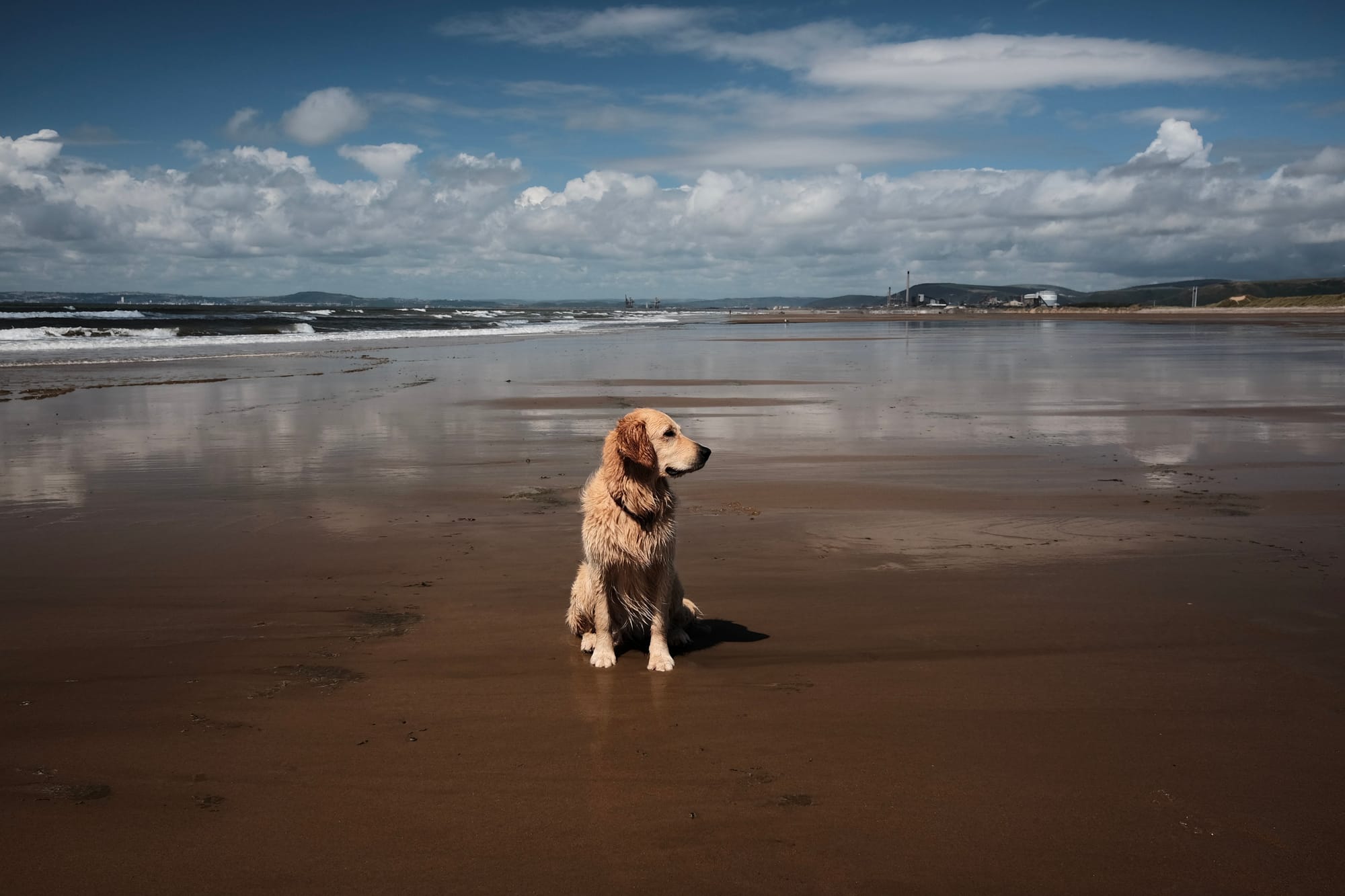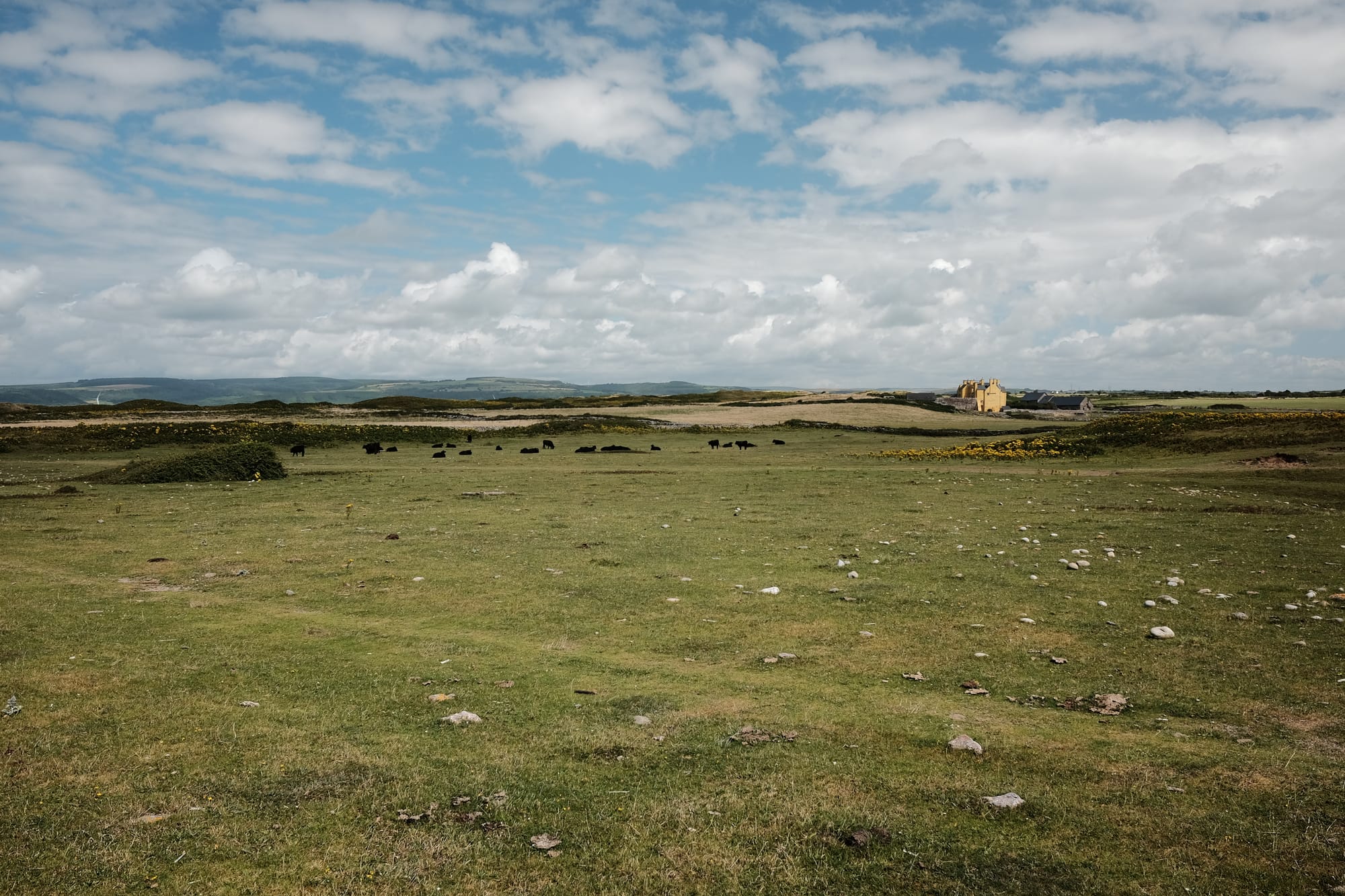Walking the sands of Sker
Leaving busy Rest Bay behind, I walked on sand that stretched towards a dragon breathing its last.

Back in the summer, we returned to Porthcawl so G could go surfing. He’d enjoyed it on a school trip and wanted to practise some more, so instead of usual destination of Cynffig, we headed for Rest Bay and its surf shop. With no dogs allowed on this beach, I volunteered to walk our Golden Retriever, Lula, along to dog-friendly Sker beach while J and G surfed.
We hadn’t gone far along the coast path before Lula stopped to greet a Border Collie, and the collie’s owner stopped to greet me. We talked about dogs, and walking. He, his friend and the dog had walked from Maesteg along the coast. The collie had probably walked three times as far, they reckoned – darting in and out of the sea as they made their way along the beach. It sounded lovely, and as I wished them well I was looking forward to the rest of my walk.
Lula and I continued along the slither of boardwalk between the beach and the golf course. The path was busy with walkers. It seemed a little unfair that a small group of golfers could monopolise such a huge swathe of the landscape, pushing the rest of us to the margins. It’s a story repeated across the country – enclosing and commercialising open space.
I felt better when the golf course gave way to grazing land dotted with cows, some of which had wandered over to the beach for a lie down. It must be an amazing place to be a cow, at least compared to an indoor shed where you never see the light of day. If I were a cow this is where I’d want to spend my days, dividing my time between grazing on the low cliffs and lazing on the beach. Do they eat seaweed I wondered, like the sheep on North Ronaldsay?

The cows stayed put, sleeping and eating, and I moved on. Inland, the yellow walls of Sker House came into view. The walls are not those originally raised for the Cistercian monastic order over 900 years ago. Those are long gone; the house was rebuilt in the sixteenth century. Several hundred years later it found fame as the setting of R. D. Blackmore’s book The Maid of Sker, in which an elderly fisherman unravels the mysterious origins of a foundling child washed ashore on the Glamorgan coast.
But there were no mysteries awaiting me around the next corner, just a vast wash of sand spreading itself along the coast. This was Sker beach. The few people dotted around seemed impossibly small, their dogs tiny ants. I joined them and made my way along the expanse, veering towards the sea as I went. A fisherman rode past me on a fat bike, circling and detouring just for fun before parking up and walking out to a rock amid the surf, where his companion was waiting.
I was a good way along the beach now. I’d had half a mind to walk as far as the steelworks at Port Talbot, but the hazy, smoky silhouettes of its blast furnaces, coke ovens and sinter plant looked no closer now than when I’d started. I’d leave that for another day, I decided, and turned back.
A month or so after my walk, the blast furnaces at Port Talbot steelworks were shut down forever. The fiery meeting of coke, iron ore and limestone will be replaced, eventually, by the hum of an electric arc furnace used to recycle steel. Traditional steelmaking at the UK's biggest plant is gone forever. The dragon has taken its final breath.

